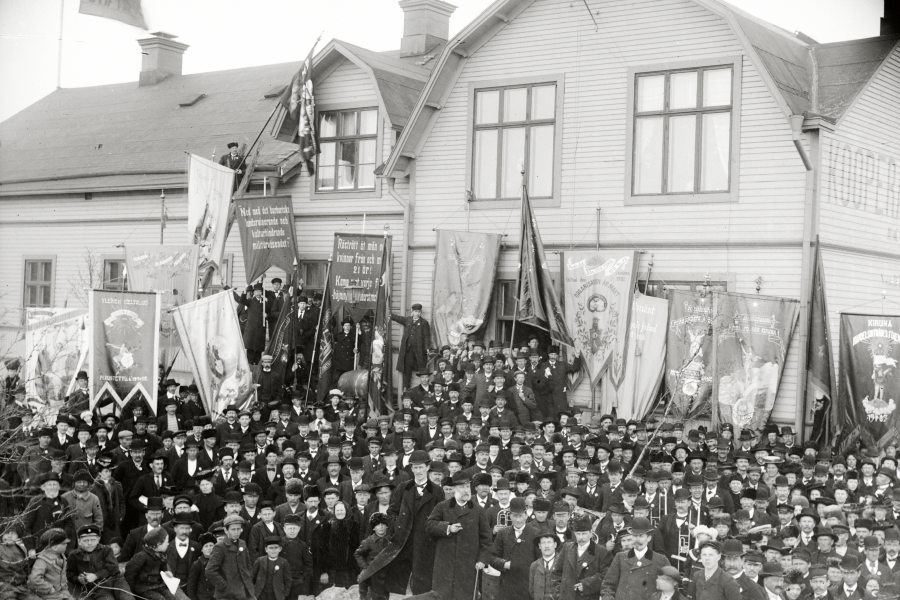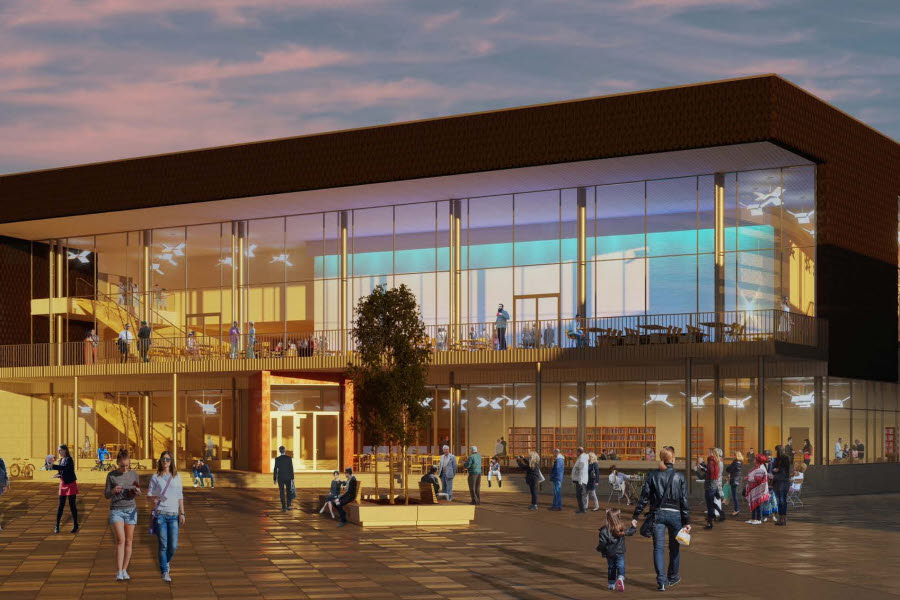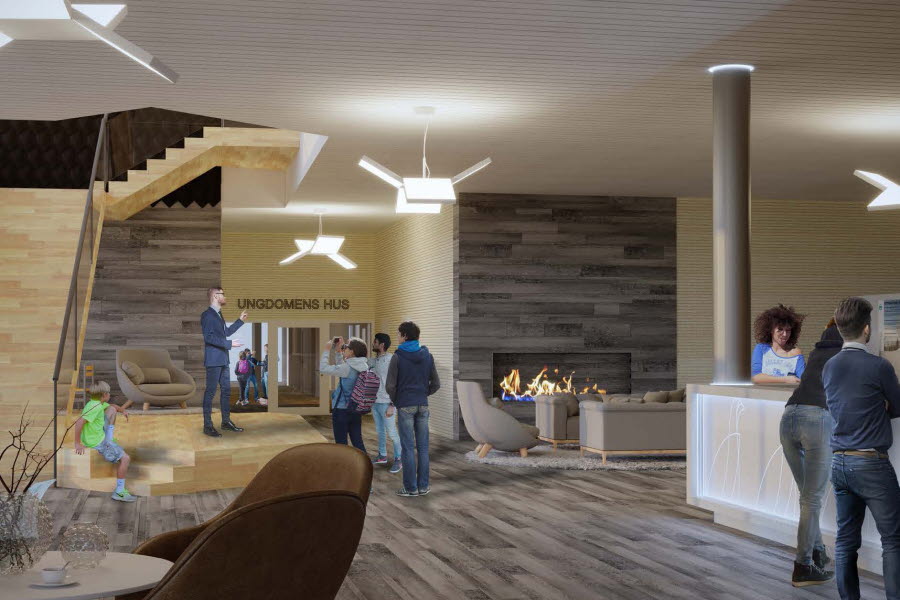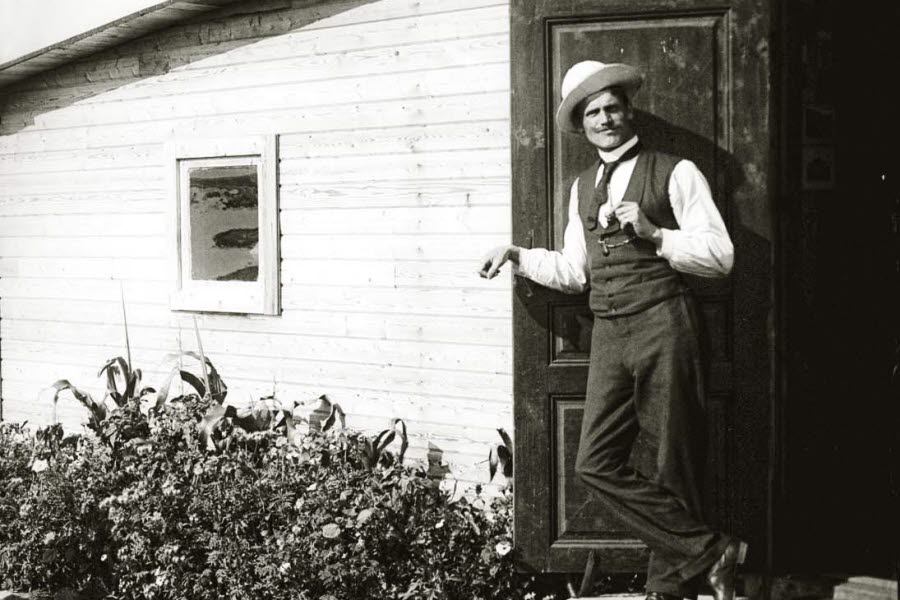Platsbildningen ni står vid nu som ligger bakom staketet, Meschplan, är uppkallad efter fotograf Borg Mesch som kom till Kiruna hösten 1899. Genom hans bilder finns Kirunas utveckling från ödemark till stad dokumenterad.

1924 flyttade han sin ateljé hit till det gröna Palladiumhuset. Palladiumhuset hade uppförts två år tidigare som biograf med bostad ovanför. Redan 1930 fick byggnaden dagens utseende, men dess ursprungliga karaktär med strävpelare går fortfarande att se från innergården.

Palladium var bara en flera biografer i Kiruna och staden fick snabbt ett rikt förenings- och kulturliv som lever kvar än idag. 1903 fanns redan ett fyrtiotal föreningar och dessa har gett namn åt Föreningsgatan som går förbi ovanför Meschplan. Idag är Kiruna en av Sveriges föreningstätaste städer.

Det var föreningslivet som var bidragande till att ett första Folkets hus stod klart 1902. Ett nytt Folkets hus uppfördes vid Vänortstorget 1987, men har nyligen stängt på grund av stadsomvandlingen.

I utvecklingen av den nya stadskärnan så passar Kiruna kommun på att skapa en miljö- och funktionsmässigt smart stad genom att kombinera verksamheter i gemensamma lokaler. Kirunas nya kulturhus, Aurora kultur och kongress, ska vara en mötesplats där många olika funktioner samlas: stadsbibliotek, konsthall, ungdomens hus, biosalonger, kongressal, restaurang samt mindre konferensrum. Aurora kultur och kongress uppfördes bredvid stadshuset Kristallen och var färdigt hösten 2021.

Meschplan

The location where you are now standing, Meschplan, is named after the photographer Borg Mesch who came to Kiruna in the autumn of 1899. Through his photographs, Kiruna's development from wilderness to town has been documented.

In 1924, he moved his studio here to the green Palladium building. The Palladium building had been built two years earlier as a cinema with an apartment above it. As early as in 1930, the building was given its current appearance but its original character with buttresses can still be seen from the courtyard.

Palladium was just one of several cinemas in Kiruna and the town quickly gained a rich variety of cultural and other associations which still exist today. By 1903, there were already about forty associations which led to one street being named Föreningsgatan (Association Street) and it runs past Meschplan. Today, Kiruna is one of the towns in Sweden with the greatest number of associations.

The many associations in Kiruna was a contributing factor to the building of the town’s first Folkets Hus (community hall) in 1902. A new Folkets Hus was built at Vänortstorget in 1987, but is now closed because of the citytransformation.

As the new town centre is being developed, Kiruna Municipality is taking the opportunity to create an environmentally and functionally smart city by combining activities in shared premises. Kiruna's new cultural centre, Aurora, will be a meeting place where many different functions are gathered: town library, art gallery, youth centre, cinemas, congress hall, restaurant and smaller conference rooms. The Aurora cultural centre is built next to the Kristallen Town Hall and was completed in autumn 2021.


